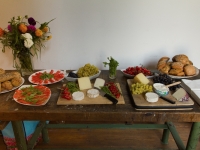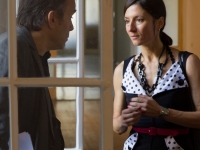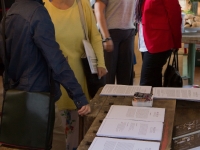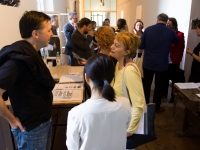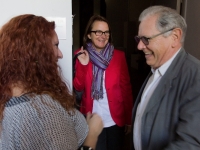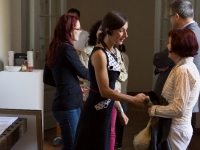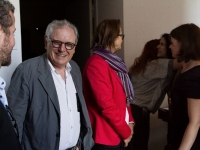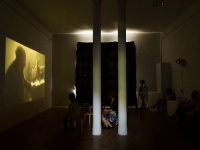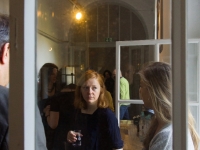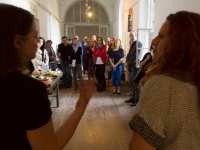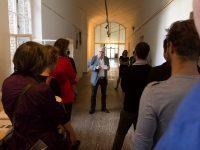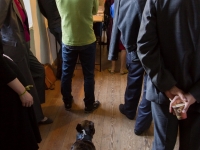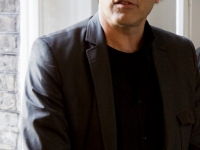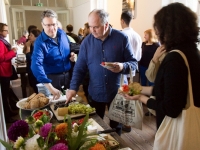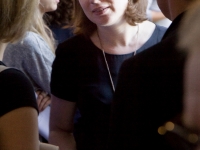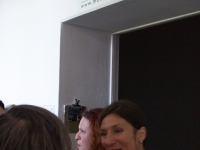The Best of Times, The Worst of Times Revisited:
Selected Videos From The 1st Kiev Biennale
Curated by David Elliott and Rachel Rits-Volloch
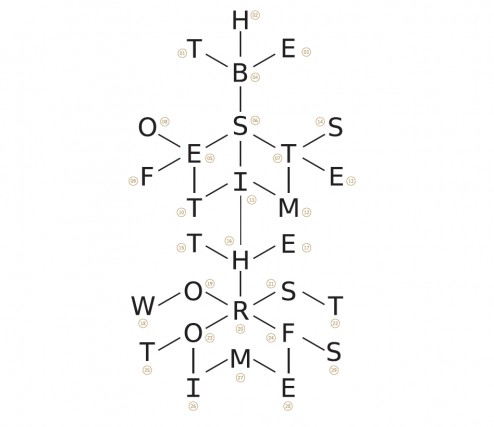
Lutz Becker, THE SCREAM • John Bock, MONSIEUR ET MONSIEUR •
Gülsün Karamustafa, INSOMNIAMBULE • Tracey Moffatt, DOOMED • Map Office, THE OVEN OF STRAW
• Miao Xiaochun, RESTART • Yang Fudong, YEJIANG / THE NIGHTMAN COMETH

6th September – 27th October
Eröffnung / Opening 6 September 2013 19 Uhr
MOMENTUM, Kunstquartier Bethanien, Mariannenplatz 2, 10997 Berlin
 |
MOMENTUM is pleased to announce the showing of a special programme of video works originally screened at the 1st Kiev Biennale last year. The works will be on view from 6 September – 27 October 2013 at MOMENTUM Berlin and then on our SKY SCREEN initiative for video art in public space in Istanbul and Berlin! Curated by the Artistic Director of the Biennale, David Elliott, the programme features new works by John Bock, Yang Fudong, Gulsun Karamustafa, Lutz Becker, Tracey Moffatt, Map Office, and Miao Xiaochun. MOMENTUM is excited to bring these works to audiences in Berlin, Istanbul and beyond.
Echoing the first words of A Tale of Two Cities (1859), Charles Dickens’ famous novel set at the time of the French Revolution, this exhibition jumps forward to the present to consider how contemporary art and aesthetics use the past to express the future. The ideals of Human Rights developed during 18th Century European Enlightenment found their first political expression in the American and French Revolutions. Yet, in spite of fine intentions at the outset, Human Rights have been constricted as each revolution has contained at its core the worst as well as the best of human thought and action. This exhibition reflects on utopian dreams of freedom, equality, and security that are very much at the heart of our lives today, as well as on their opposite: terror, inequity and war. It is the destructive forces of both man and nature that seem to make a more ideal life impossible. Showing simultaneously across three locations in Berlin and Istanbul, revisiting this selection of works is a timely response to the current situation in Turkey, where ideals of democracy and freedom have been brought into renewed focus.
The artist Miao Xiaochun, who is part of this programme, is currently representing the People’s Republic of China in the 55th Venice Biennale.
The artist Gülsün Karamustafa, who is part of this programme, has a major solo exhibition at our collaborating partner SALT, coinciding with this programme: A Promised Exhibition.
ARTISTS and WORKS:
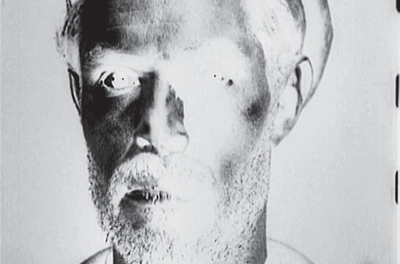
Lutz Becker, THE SCREAM, 2012
Born in 1941 in Berlin, Germany lives and works in London, UK. Lutz Becker is an artist, filmmaker, curator and film-historian. He studied at the Slade School of Fine Art, London, where he graduated under Thorold Dickinson and became a distinguished director of political and art documentaries. A practicing painter, he is also a curator of exhibitions. He collaborated with the Hayward Gallery on The Romantic Spirit in German Art (1994), Art and Power (1995), and Tate Modern on Century City (2001). As of 2003, Becker has been working for the Mexican Picture Partnership ltd.’s reconstruction project of Sergei M. Eisenstein’s film ¡Que viva Mexico! ‒ Da zdravstvuyet Meksika!.
THE SCREAM
‘The video installation The Scream is an homage to the Ukrainian filmmaker and poet Aleksandr Dovzhenko (1894-1956). It is a reflection on Dovzhenko as a poet who told his stories in the form of the classical eclogue, in which pastoral simplicity stands in contrast with modernist self-consciousness. Even in his more overtly political films Dovzhenko’s perspective remained subjective, attached to the old art of story telling, its allegorical elements, symbols and types. The installation, originally presented on three screens, is shown here as a single-channel version especially created for this exhibition. The work is a montage of segments from Dovzhenko’s films, based on dramatic interactions and accidental synchronicities of images and scenes, the play of affinities and contrast, textures, details, and the monumentalisation of the human face’.
 |

John Bock, MONSIEUR ET MONSIEUR, 2011
Born in 1965 in Gribbohm, Germany lives and works in Berlin, Germany. John Bock makes lectures, films and installations that combine and crosspollinate practices of language, theatre and sculpture in an absurd and complex fashion. He is known for producing surreal, disturbing and sometimes violent universes in which he manipulates fantasmagorical machines constructed out of waste and found objects. Bock actively collapses the borders of performance, video and installation art. Raised in a rural area of Germany (a background that he has drawn upon for his films involving tractors and rabbits), Bock came to prominence in the 6th Berlin Bienniale (1998), the 48th Venice Biennale (1999) and Documenta 11 in Kassel (2002). He was initially known for his unpredictable, sprawling live performances in which he brings together uncanny costumes, jury-rigged sets made from tables, cupboards and simple machinery, and his own wildly discursive lecturing style. Clad in bright and excessive cloth appendages and covered in sickly materials, Bock interacts with handmade assemblages and inanimate objects that reference a range of social, scientific and philosophical structures. Following the less florid practice of Joseph Beuys, the settings and objects remain in the exhibition space as installations in the aftermath of his lectures. Moving from early documentation videos of performances, Bock has recently begun to work on more complex videos and films that play with the structures and genres of cinema. He uses spectacular settings and costumes, rapid-fire editing, and a mix of sound and popular music to stage narratives that reference such broad fields as 1990s Hollywood cliché, 1970s Glam Rock and nineteenthcentury dandyism. He does not appear personally in Monsieur et Monsieur, 2011, the film shown here, but instead plays the role of director of this bizarre, kafkaesque nightmare.
 |
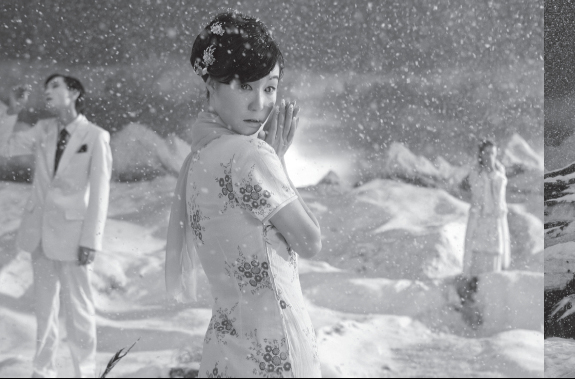
Yang Fudong, YEJIANG / THE NIGHTMAN COMETH, 2011
Born in 1971 in Beijing, China lives and works in Shanghai, China. Yang Fudong’s films, photographs and video installations are born out of an interest in the power of the moving image to explore subjectivity, experience and thought. He draws stylistically on different periods in the history of Chinese cinema to create open ended existential narratives that interweave quotidian ritual with dream and fantasy states. Yang trained as a painter in the China Academy of Fine Arts in Hangzhou. In the 1990s, he started to work in the medium of film and video. He is known for his cinematography and mastery of cinematic style, using 35mm film to produce powerful and poetic works about the human condition with its malaise and fantasies of everyday life. He possesses a sensitivity to the traditions of Chinese art, cinema and the place of the intellectual (the literati). Each of his films is philosophical and open-ended, engaging questions around both history and contemporary life, mostly depicting the lives of young people from his own generation, albeit with historical resonances that sometimes span many centuries. Through vignettes staged with classical precision, yang’s works propose a poetics of place and a critique of time that is determined through the interaction of individuals rather than by political doctrine.
THE NIGHTMAN COMETH / Ye Jiang
The single screen work shown here, unfolds in the realm of historical fantasy. An ancient warrior is seen wounded and forlorn after battle, in conflict about his path in life. Three ghost-like characters appear as emblems of feelings and thoughts that surface and clash within the warrior’s heart and mind as he has to decide whether to disappear or continue fighting. Yang has preferred to describe this film as ‘neo-realistic’ rather than historical or allegorical: Neo-realism” is a history theatre where current and contemporary social conditions come to play. Who exists realistically, the warrior baron in his period costume or the ghost in a modern outfit? When the ancient battlefield scene and other historical events appear and reappear, where do they belong, in the past, the present or the night-falling future?…. There is hope nonetheless. The body is full of desire whereas the soul is more precious. His spirit is what backs him up in life. How should we live our lives now? How do we identify ourselves with neorealistic historical events and continue to search for spiritual meanings? What do we really want?” [DE]
 |

Gülsün Karamustafa, INSOMNIAMBULE, 2011
Born in 1946 in Ankara, Turkey lives and works in Istanbul, Turkey. Working in diverse media throughout her four-decade-long career, Karamustafa has investigated ideas of mobility, including displacement, immigration, expatriation, exile, and relocation.
INSOMNIAMBULE
Insomniambule follows the nightly journeys of two characters, Somnambule and Insomniac. While one gives clues that she is suffering from nightly sleepwalks, the other stands in contrast as a symbol of constant consciousness. Though they seem to depict the heterogeneity of being awake and asleep, at their core, the two states exhibit distinct similarities. Both are fighting against the state of sleep ‒ Insomniac deliberately rejecting sleep and trying to keep consciously awake while Somnambule struggles against deep slumber from within an already induced state of sleep. From either side, both characters must find a way to adapt themselves to normal life. The characters pass through the doors of memory and recollection, subconsciously playing several games that lead them through both personal and social past and present. The two characters, represented by the women who constantly follow one another, accentuate the uncanny sensation and weird relationship of being split into two. Therefore Insomniac and Somnambule can easily join together to form the word Insomniambule, which symbolizes them both. It also creates a platform for understanding the connection between artistic creativity and the twin conditions of insomnia and somnambulance.
Running concurrently with MOMENTUM’s video program, Gülsün Karamustafa has a major retrospective of her work at SALT, our partner for SKY SCREEN in Istanbul. The solo show, A PROMISED EXHIBITION, runs from 10 September 2013 – 5 January 2014. For more information, please click here: SALT.
 |
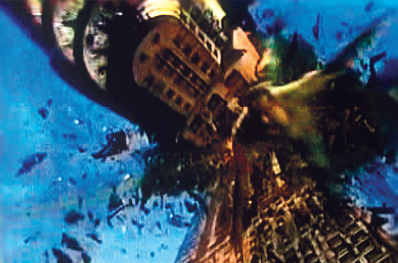
Tracey Moffatt, DOOMED, 2007
Born in 1960 in Brisbane, Australia, lives and works in Australia and USA. Tracey Moffatt is one of Australia’s leading contemporary artists as well as being an artist of international significance. She has had numerous solo exhibitions in major museums around the world. Working in photography, film and video, Moffatt first gained significant critical acclaim when her short film Night Cries was selected for official competition at the 1990 Cannes Film Festival.
DOOMED
Tracey Moffatt’s video collage, Doomed, features depictions of doom and destruction ‒ war, violence and terror ‒ as they appear in popular cinema. In collaboration with Gary Hillberg, with whom she made Other (2009), Love (2003), Artist (2000) and Lip (1999), Doomed uses cut-and paste editing techniques in a highly entertaining and black-humorous take on the bleak side of our current psychological landscape. Moffatt’s film looks at both entirely fictional and reconstructed disastrous events. Each scene carries a particular cargo of references. They occupy their own unique symbolism and filmic territory ‒ the poignant, sublime and epic, the tragic, the B-grade and downright trashy. The accumulation of scenes, however, within Moffatt’s own essaying, creates a narrative whole comprised of parts. Not only does Moffatt play within the ‘disaster’ genre, re-presenting representations, she revels in it. Moffatt points at how the viewer is involved in filmic narratives through an emotional hook, by the promise of imminent disaster, an important narrative device. Moffatt’s film itself is crafted with an introduction, body and finale ‒ in a presentation of the form of filmic entertainment, as well as of ‘art as entertainment’.
 |
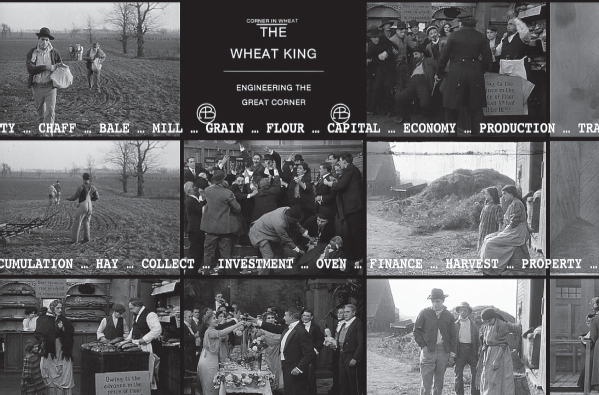
Map Office, OVEN OF STRAW, 2012
MAP OFFICE is a multidisciplinary platform devised by Laurent Gutierrez (b. 1966, Casablanca, Morocco) and Valérie Portefaix (b. 1969, Saint-Étienne, France). This duo of artists/architects has been based in Hong Kong since 1996, working on physical and imaginary territories using varied means of expression including drawing, photography, video, installations, performance, and literary and theoretical texts. Both are teaching at the School of Design, The Hong Kong Polytechnic University.
THE OVEN OF STRAW
Ukraine is traditionally the barn of Europe and one of its most important agricultural producers. Against a background of food crisis and financial speculation on agriculture, we would like to use wheat as a point of entry for thinking about the impact of speculation on the land. The Oven of Straw was originally a video installation, and is shown here as a film weaving together narrative fragments linked by their relation to wheat. The installation was a small construction inviting the visitors to enter a confined space in the shape of an oven made of straw. The structure of the oven echoes the structure of a bank with its thick wall and small entrance suggesting the opposite effects of potential danger and safety. The interior is designed like a small cinema, where visitors are presented a short film. Mixing archival material from various films, Oven of Straw explores the role of wheat as a valued system of exchange.
 |
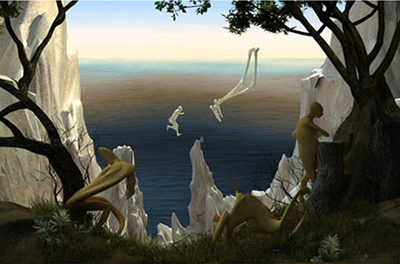
Miao Xiaochun, RESTART, 2008-2010
Born in 1964 in Wuxi, Jiangsu, China lives and works in Beijing, China. Miao Xiaochun graduated from the Central Academy of Fine Arts (CAFA), Beijing, China and the Kunsthochschule Kassel, Germany. He is presently a professor at CAFA and one of the leading digital artists in China. While studying in Europe he familiarised himself with western art history and motifs from famous classic paintings are often animated in his videos. Miao Xiaochun is considered one of the most representative and influential artists In the domain of China’s new media art. He started in 90s his creative explorations on the interface between the real and the virtual. His extensive body of work includes photography, painting and 3D computer animation which are parallel to each other. He works in contemporary photography based on the “multiple view point” perspective to pioneer connections between history and the modern world. Miao Xiaochun successfully uses 3D technology to create upon a 2D image a virtual 3D scene, to transform a still canvas into moving images, concurrently changing the traditional way of viewing paintings and giving a completely new interpretation and significance to a masterpiece of art, especially with the striking use of his idiosyncratic imagination about history and the future. His works add an important example to contemporary negotiations with art history, and open up new potential for art as he experiments with new possibilities, taking a step forward into new potential spheres.
RESTART
The apocalyptic 3D video Restart begins with an animation of Pieter Breughel’s The Triumph of Death (c. 1562). Here one famous Western masterpiece morphs into another and classical civilisation crumbles into modern chaos. As the video continues, images of the present begin to take hold, some reflecting China’s recent economic growth and technological prowess. yet no triumphalism is intended in what after all is a continuing cycle. In Xiaochun’s works the naked homogeneity of seemingly oriental CG figures based on the artist’s body, dead or alive, represent everyman ‒ his joys and horrors as well as the endless struggles between life, love and death.
 |
 |
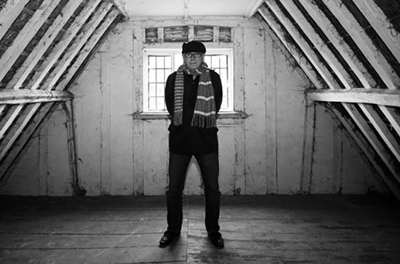
David Elliott
Davıd Elliott is an English born curator and writer. From 1976 to 1996 he was Director of the Museum of Modern Art in Oxford, England, Director of Moderna Museet [The National Museum of Modern and Contemporary Art] in Stockholm, Sweden (1996-2001), founding Director of the Mori Art Museum in Tokyo (2001-2006), the first Director of the Istanbul Museum of Modern Art [Istanbul Modern] (2007), Artistic Director of the 17th Biennale of Sydney (2008 – 2010) and Artistic Director of the 1st Kiev International Biennale of Contemporary Art (2011-12), Rudolf Arnheim Guest Professor in Art History at the Humboldt University, Berlin (2008) and Visiting Professor in Museum Studies at the Chinese University in Hong Kong (2008/11/13). From 1998 until 2004 he was President of CIMAM (the International Committee of ICOM for Museums of Modern Art). He is Hon President of the Board of Triangle Art Network/Gasworks in London and on the Asia Advisory Board of the Guggenheim Museum in New York.
THE BEST OF TIMES, THE WORST OF TIMES REBIRTH AND APOCALYPSE IN CONTEMPORARY ART
The Best of Times, The Worst of Times reflects on seemingly utopian dreams of freedom, equality, and security, as well as on their opposites: terror, inequity, poverty and war, that are very much at the heart of our lives today. It is this destructive impulse – some may say necessity – within both man and nature that seems to make a more ideal or stable life impossible. Yet the Kantian idea of artistic autonomy is one of the significant survivors of this age of revolutions. Without it art would always be the servant of some greater power and contemporary criticism would end up as little more than a small, rudderless, leaky boat at the mercy of a boundless, all-consuming tide.
This same program will be shown on SKY SCREEN, MOMENTUM’s initiative for video art in public space. SKY SCREEN turns the museum and gallery inside out by bringing video art onto the streets, thereby making it widely accessible and building curiosity and public interest in contemporary art.
SKY SCREEN:
The Best of Times, The Worst of Times Revisited: Selected Videos From The 1st Kiev Biennale
Curated by David Elliott
Showing On:
11 – 15 September, from dusk until dawn
SKY SCREEN Istanbul at SALT Beyoğlu
İstiklal Caddesi 136, Beyoğlu 34430 İstanbul, Turkey
Coinciding with the Opening of the Istanbul Biennale
IN COLLABORATION WITH SALT
SALT is a not-for-profit institution located in Istanbul and Ankara, Turkey. Opened in April 2011, SALT hosts exhibitions, conferences and public programs; engages in interdisciplinary research projects; and sustains SALT Research, a library and archive of recent art, architecture, design, urbanism, and social and economic histories to make them available for research and public use. SALT’s mission is to explore critical and timely issues in visual and material culture, and cultivate innovative programs for research and experimental thinking.
SALT Beyoğlu, İstiklal Caddesi 136, Beyoğlu 34430 İstanbul, Türkiye
And:
21 – 22 September, 20:00 – 24:00
SKY SCREEN Berlin at Collegium Hungaricum
Dorotheenstr. 12, 10117 Berlin
During Berlin Art Week
IN COLLABORATION WITH .CHB
The .CHB is an innovative cultural institution located in Berlin and an active partner in the cultural landscape of Berlin and Germany. It explores a wide range of topics, shedding its own perspectives on current issues, ideas and concepts. Collegium Hungaricum Berlin is part of the Balassi Institute for the promotion of Hungarian Culture.
PRESS BREAKFAST IMAGE GALLERY:


 Back to Homepage
Back to Homepage

